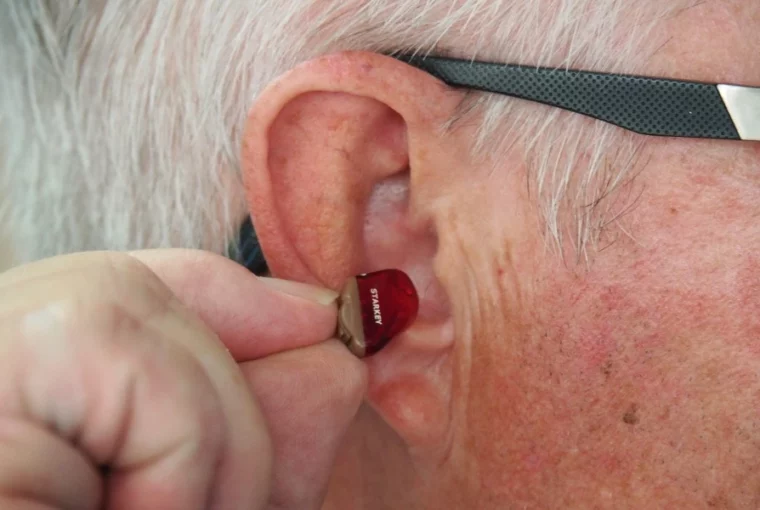The sense of hearing is a vital part of our daily lives. It allows us to communicate, listen to guidance and instructions, and understand what’s going on around us. However, the ability to hear clearly diminishes as we age. When a senior’s hearing starts to deteriorate, it’s important that they have access to a hearing aid that will let them continue to live normally.
There is a wide selection of amplification tools that may help an elderly relative or friend who is having trouble hearing. The ability to communicate with people and take part fully in social events is one way in which these devices can enhance the quality of life for those with moderate to severe hearing loss.
Hearing aids
An in-the-ear or behind-the-ear hearing aid is a tiny electronic device that helps the wearer hear better. It boosts volume so you can hear better, facilitating conversation and regular activities.
There are three pieces to a hearing aid. A microphone picks up the sound and transforms it into an electric signal transmitted to an amplifier. The impulses are amplified before being sent to a speaker and ultimately the human ear. There is also a range of hearing aid accessories available such as device protection, batteries, hearing aid dryer, wax guards, etc.
Hearing aids may be divided into three categories:
- Behind-the-ear (BTE). The hearing aid’s electrical components are housed in a hard plastic casing that sits behind the wearer’s ear. It’s linked to a custom earpiece that sits in the external canal.
- In-the-ear (ITE). The electronic casing, made of hard plastic, of this kind of hearing aid, may be placed entirely into the outer ear canal. As an alternative to a microphone, certain ITE hearing aids can pick up sound via the use of an electronic coil.
- Canal hearing aids. These are devices custom-made for the individual’s ear dimensions and shape. Devices that fit completely into the ear canal are almost undetectable.
Consult an audiologist for assistance in selecting the best hearing aid for your budget, preferences, and daily routine.
Personal Assistive Listening Devices
It’s more challenging to hear anything when there’s a lot of background noise in the room. Hearing-impaired individuals may benefit greatly from the use of assistive technology to better comprehend what is being said and to communicate with others.
These gadgets amplify certain sounds to the user’s ears and may help you hear better in noisy environments such as schools and theaters. Nowadays, you can connect your hearing aid or cochlear implant wirelessly to various listening devices.
A few examples of special types of sound systems for the hearing-impaired are:
- Hearing loop. This is a special type of sound system used to transfer amplified sound and it provides a magnetic, wireless signal that is picked up by the hearing device.
- FM systems. Educators often use this tool. It is a special wireless device that helps people hear better in noisy environments.
- Infrared systems. It is an assistive audio system that aids communication for people with impaired hearing and is an alternative to an induction loop system. Those with telecoil-equipped hearing aids or implants may also use a neck loop to take up the signal.
- Personal amplifiers. These devices help to amplify the user’s voice while also cutting down on ambient noise.
Alerting Equipment
Alerting gadgets may help you hear things like the doorbell or the phone ringing. They may also notify you of events occurring nearby such as a fire, an intruder, or your kid moving about. These tools transmit a signal that you can decipher. Depending on the situation, the indicator might be a pulsating light, a honking siren, or a rumbling ground.
Over-The-Phone Devices
There are a plethora of aids available for both listening and speaking over the phone. The volume of certain phones may be increased by using the device. There is also the option of using a phone amplifier. It’s possible to utilize some of them with any phone since they’re portable.
In order to get the most out of them, certain amplifiers are placed in the ear canal. These devices are compatible with many hearing aids, however, some may need specialized configuration.
Using a digital phone line with your hearing aid is simplified by other accessories, and distortion is mitigated to some extent.
Final Thoughts
It is important to consult a doctor if you or a loved one has had a notable decrease in hearing, since untreated hearing loss may worsen over time. Hearing aids, medication, and even surgery may be able to help restore some degree of hearing function if detected early enough. With the help of hearing devices, people can continue to do their daily tasks and communicate with others with ease.




